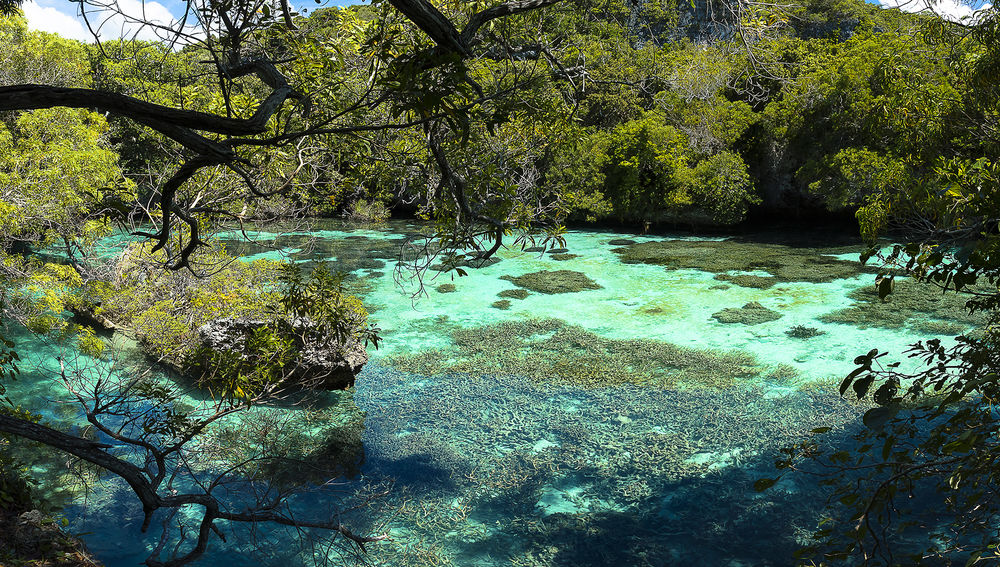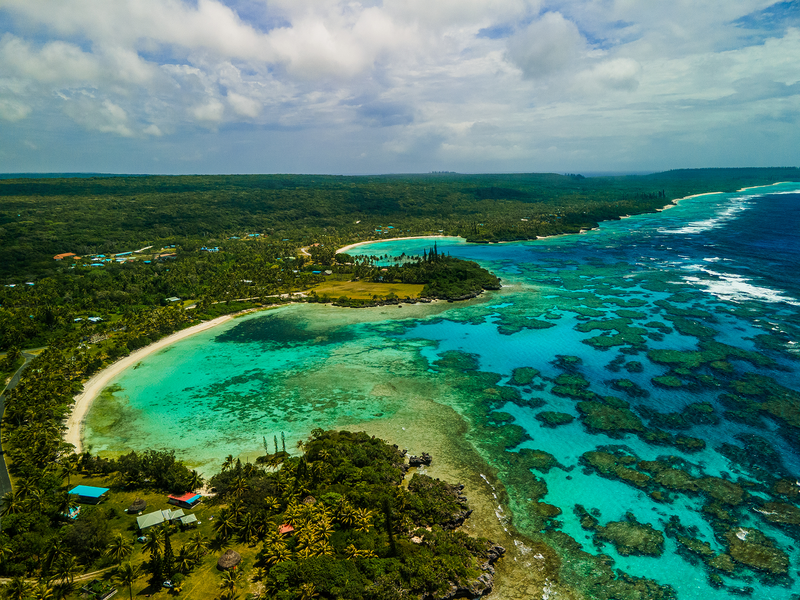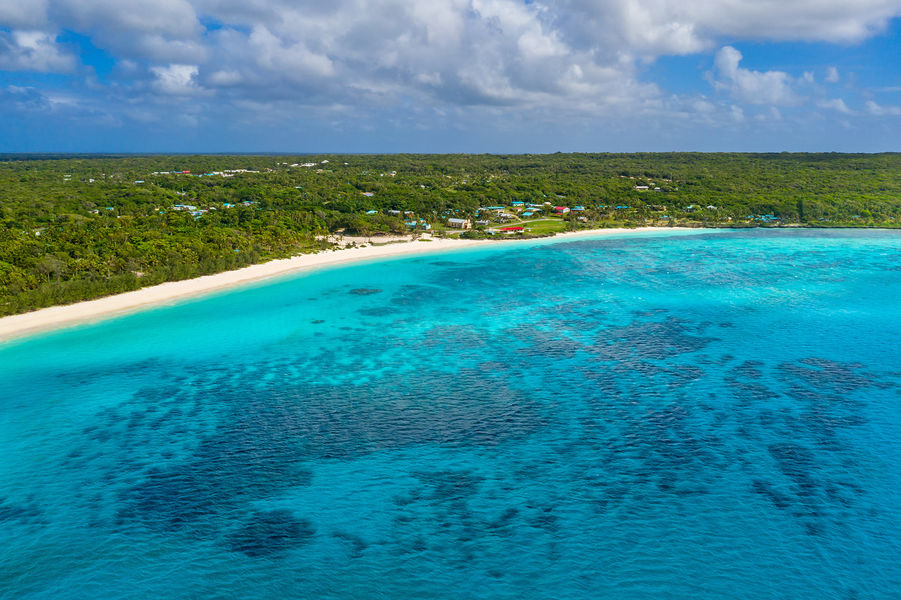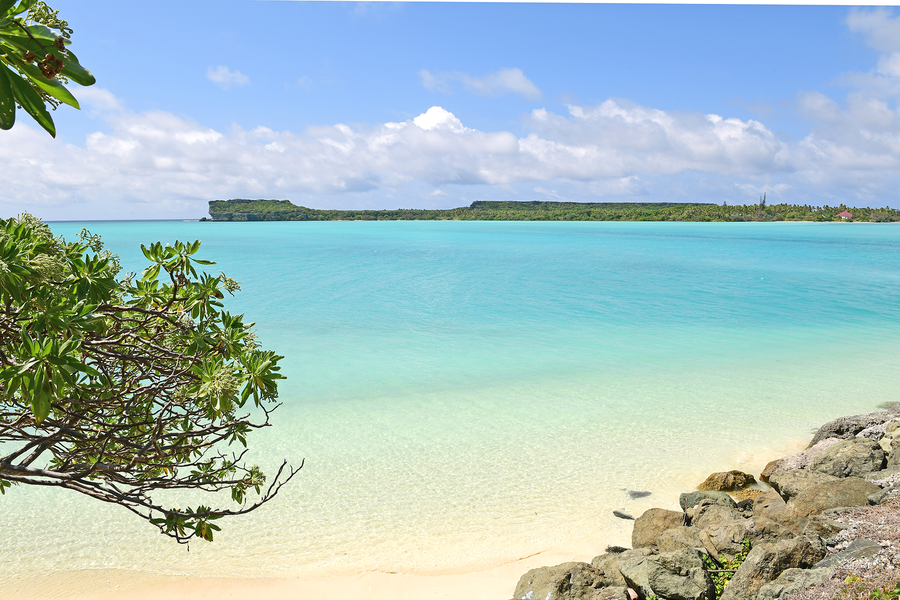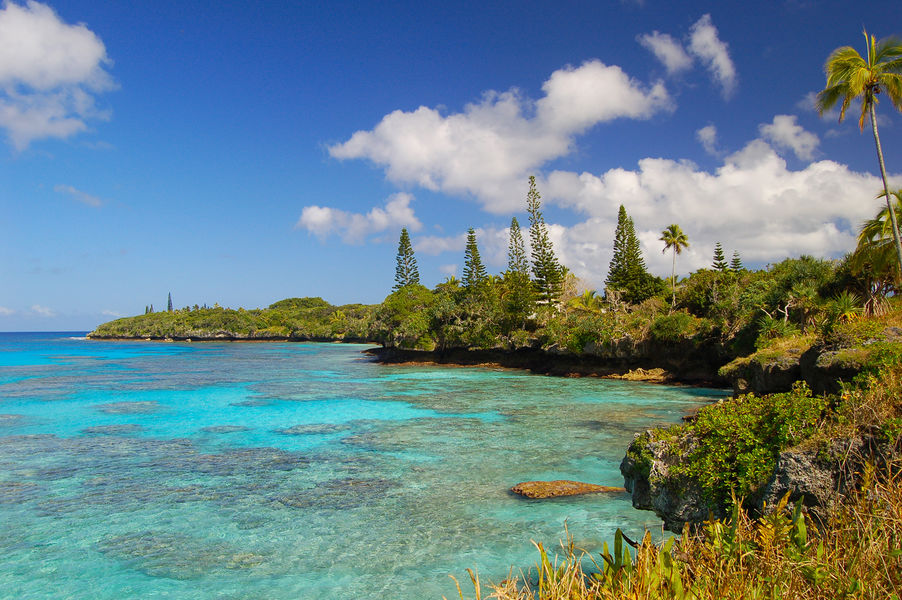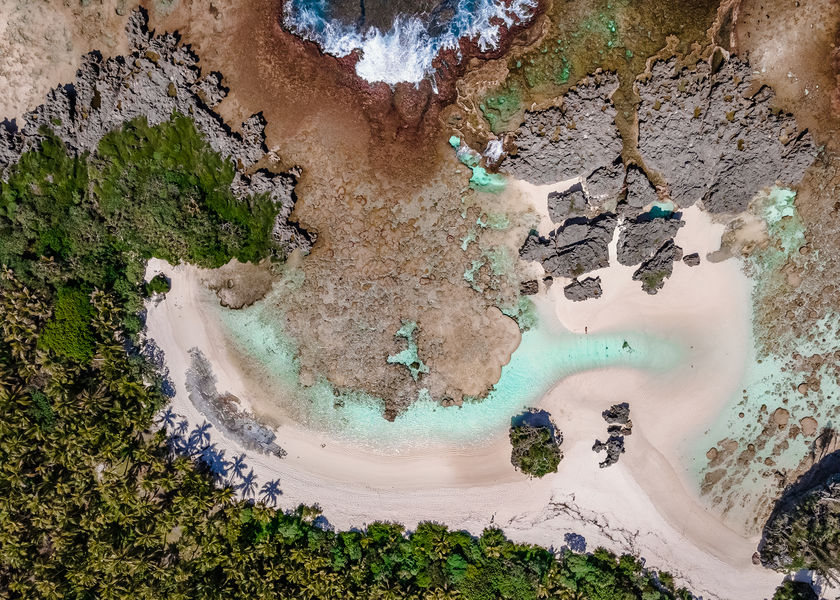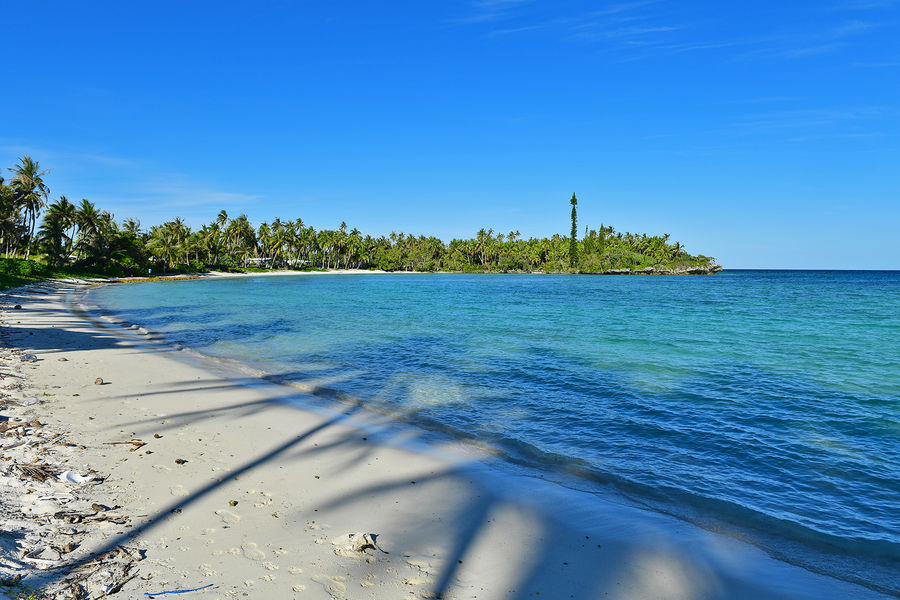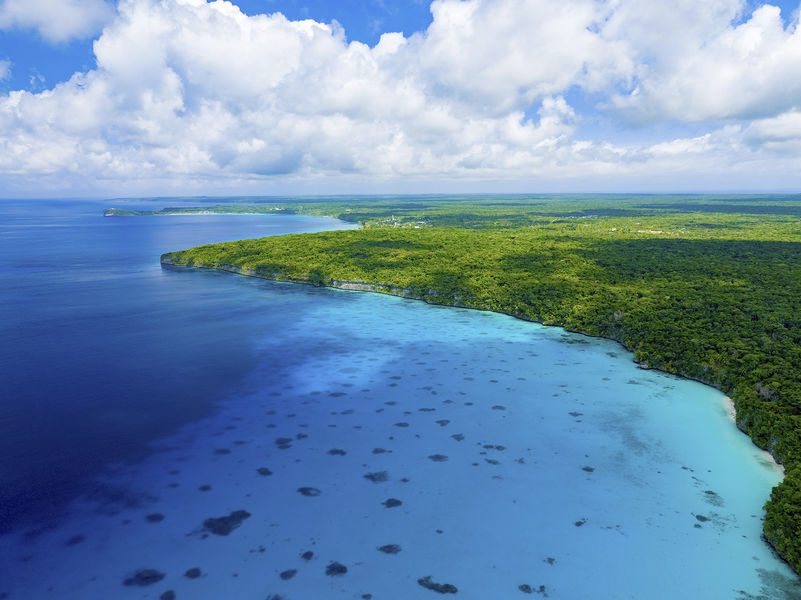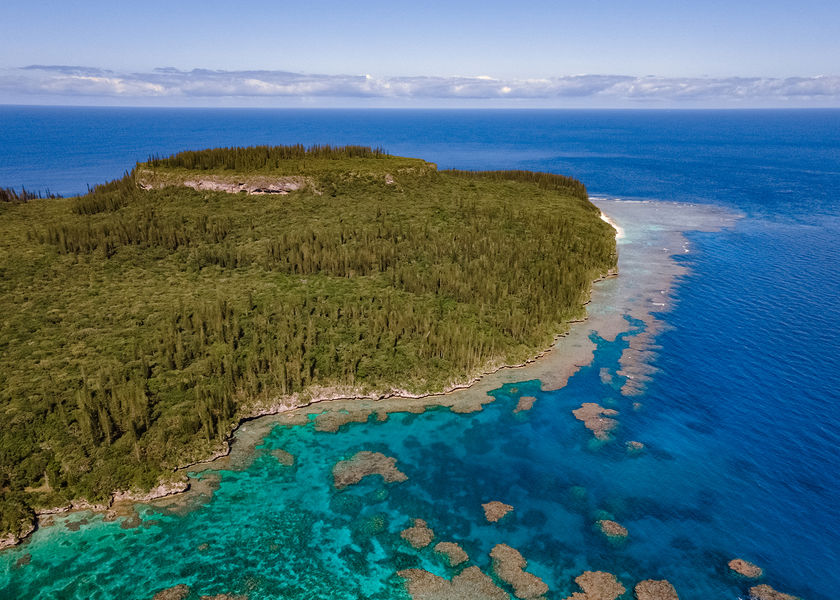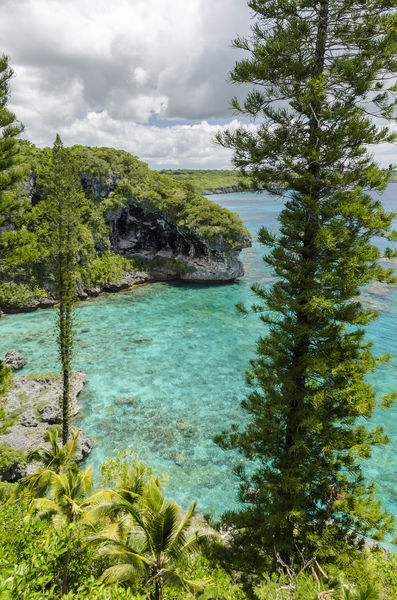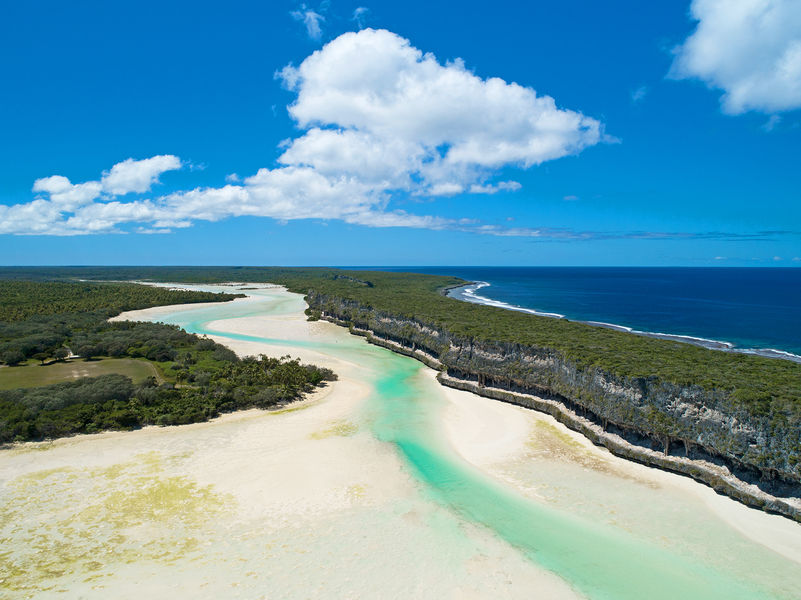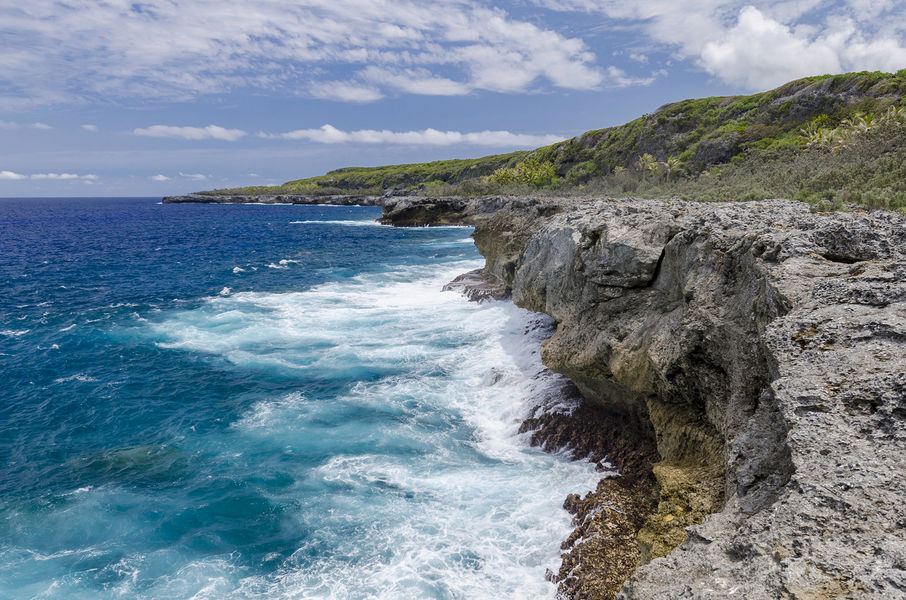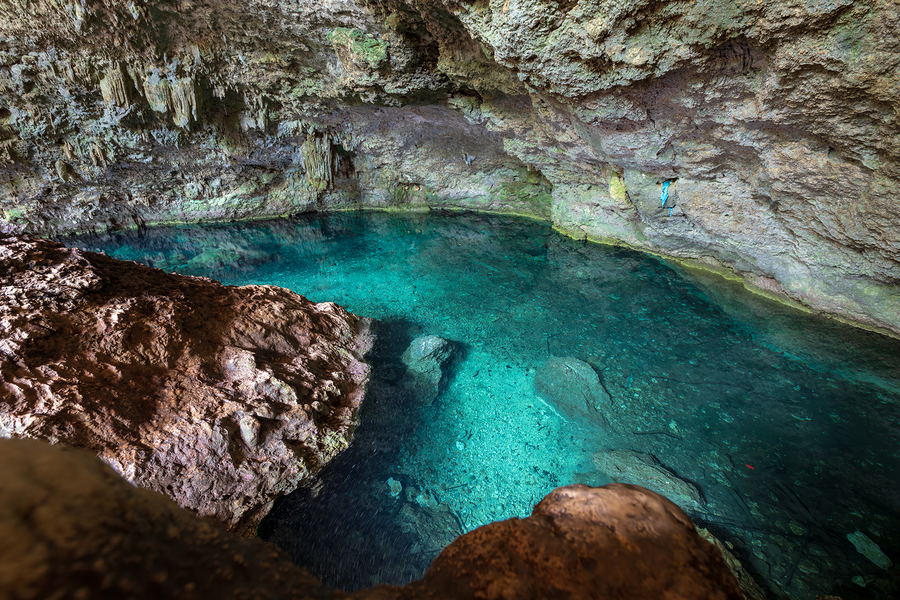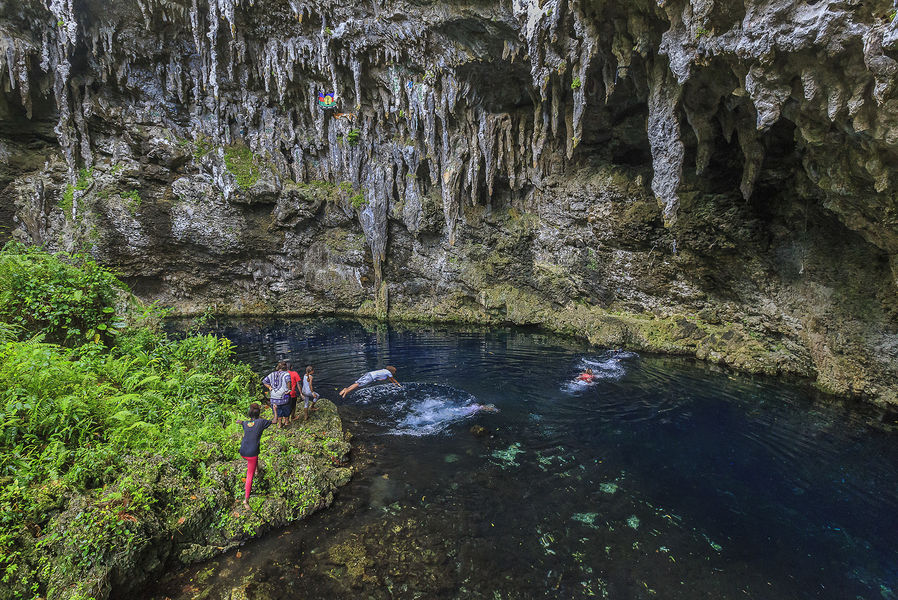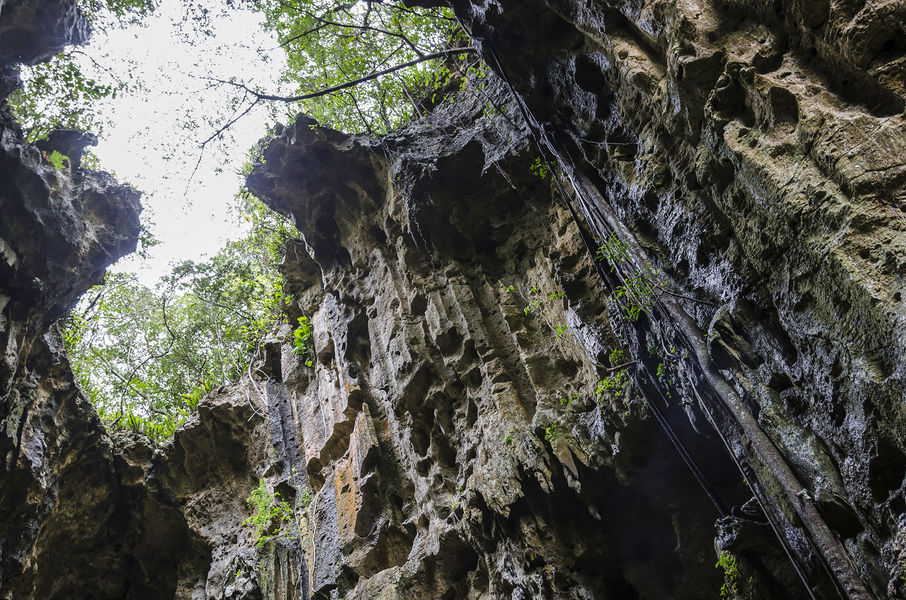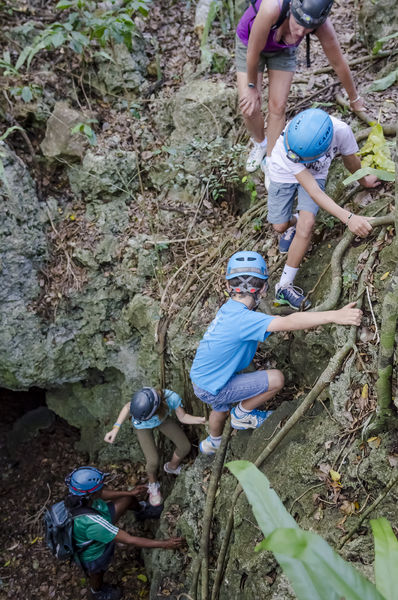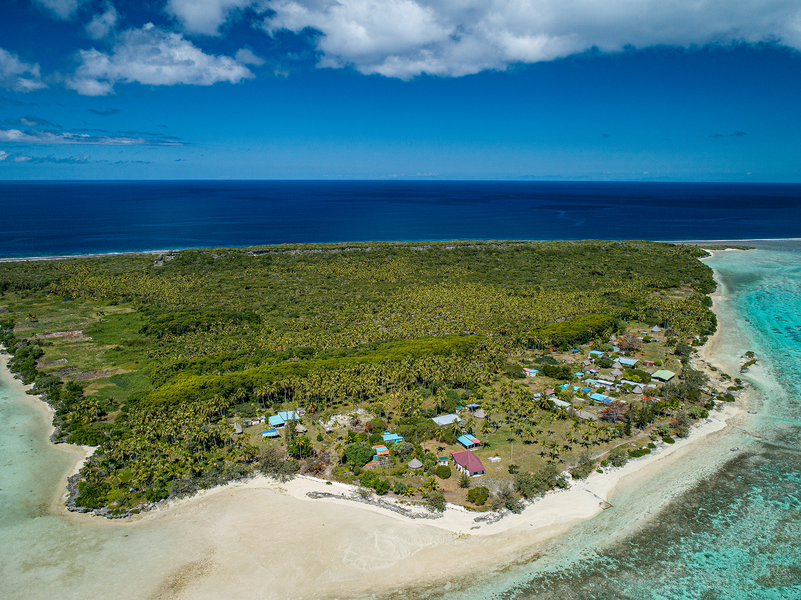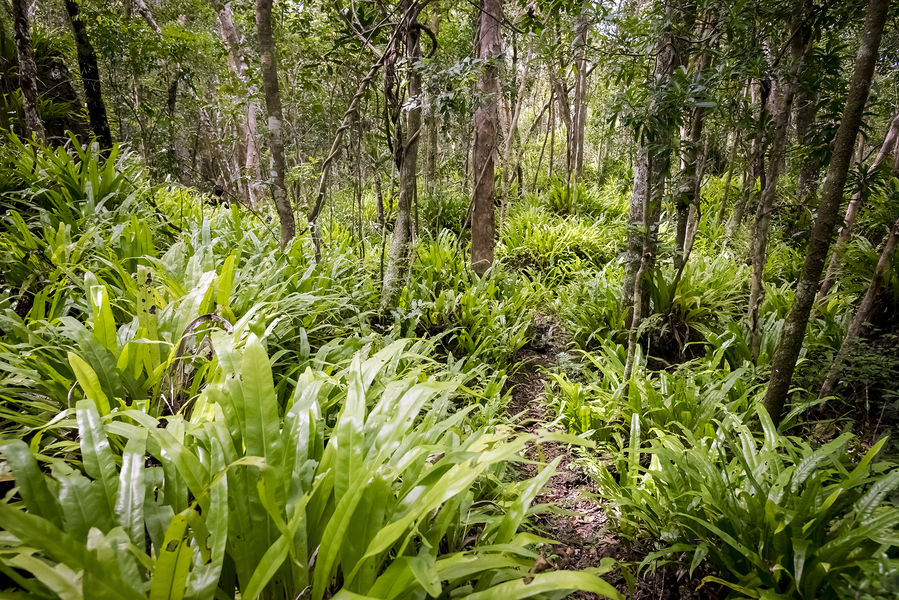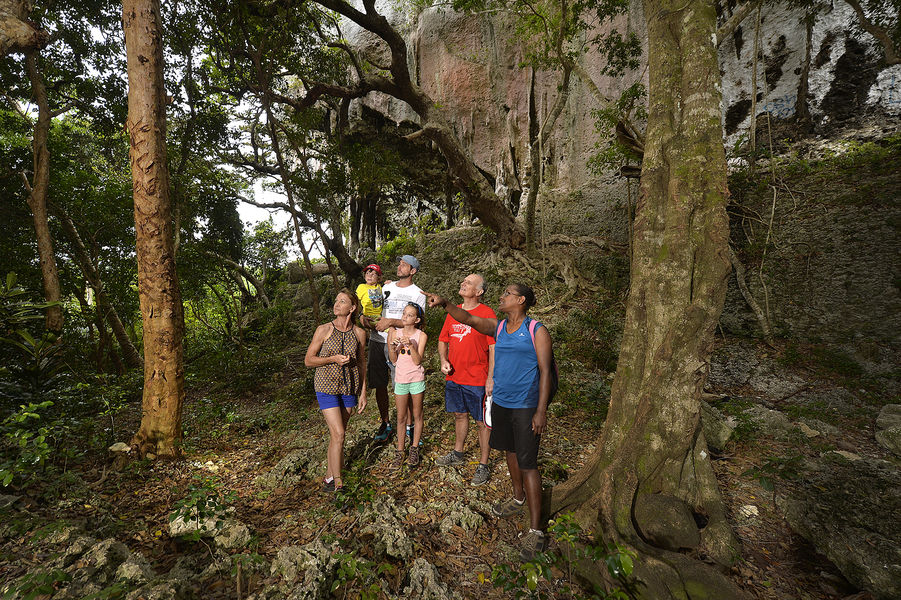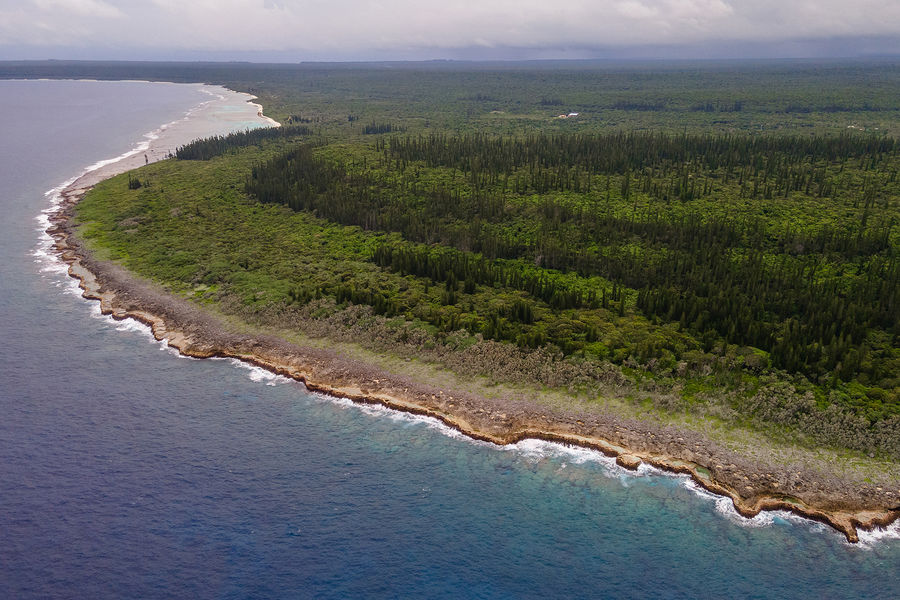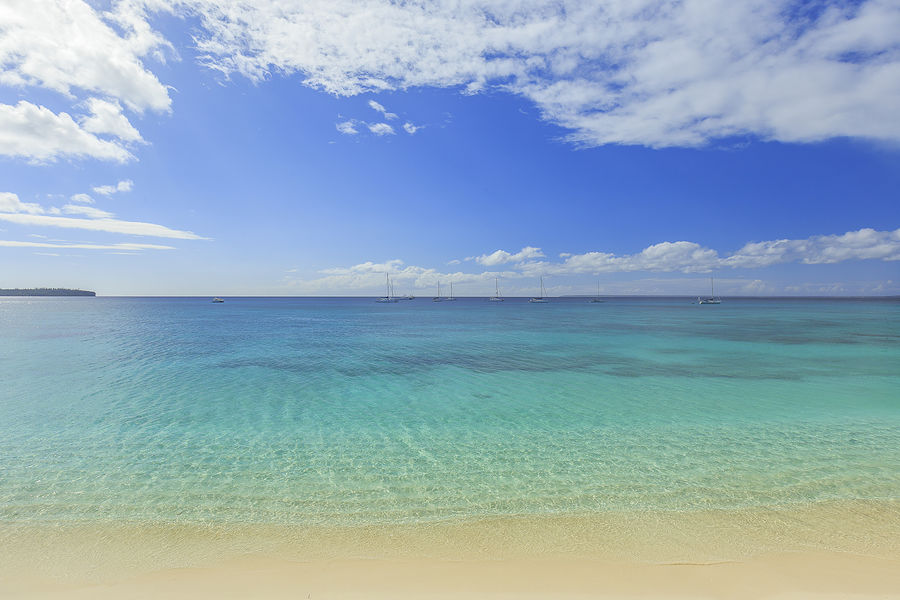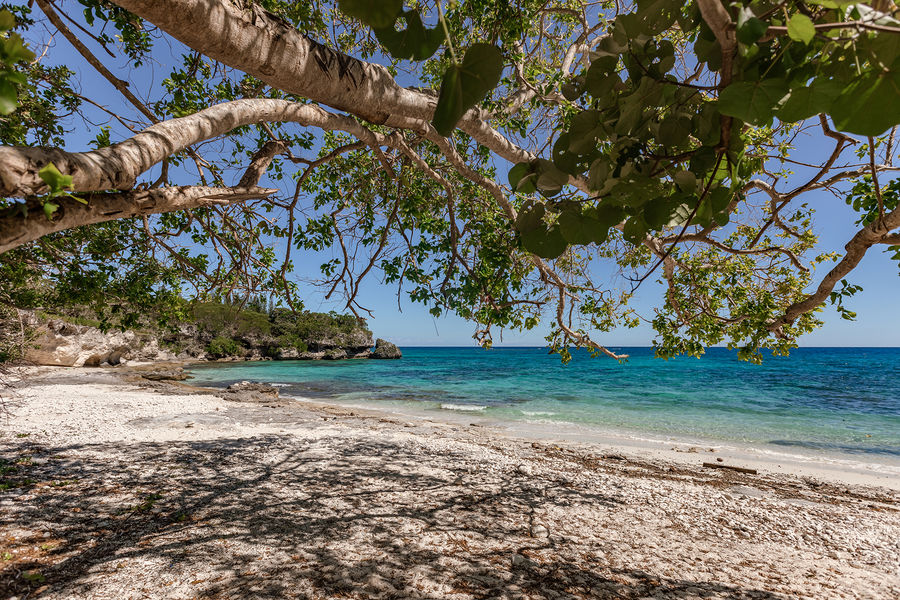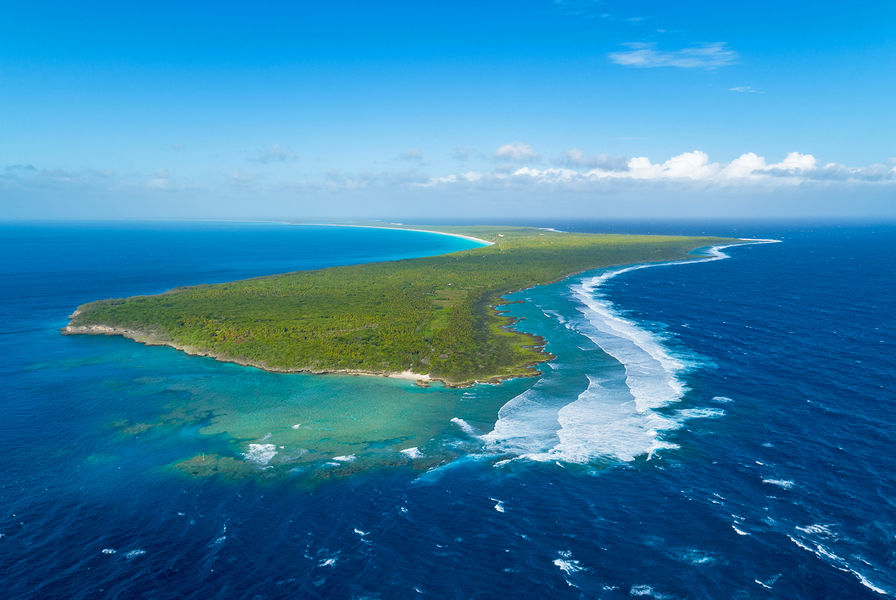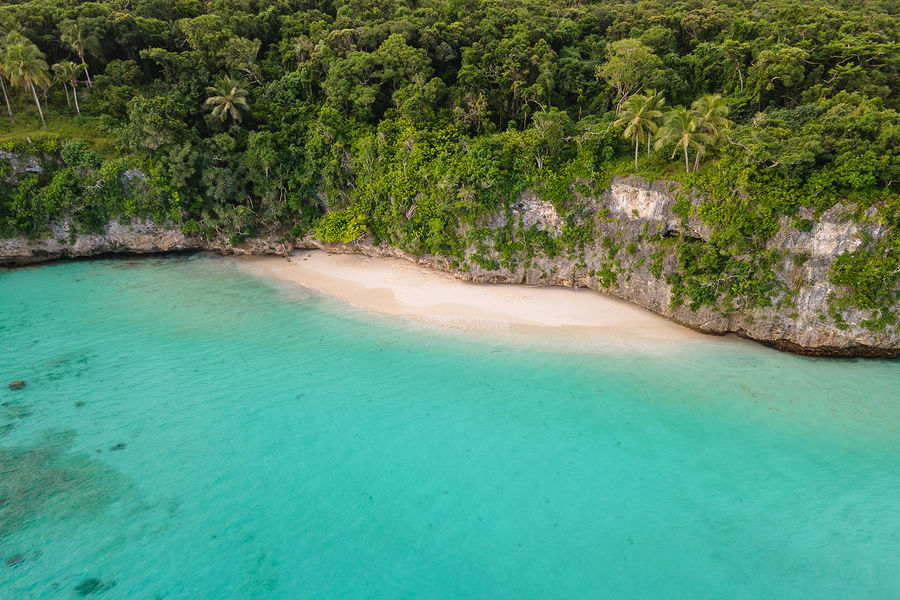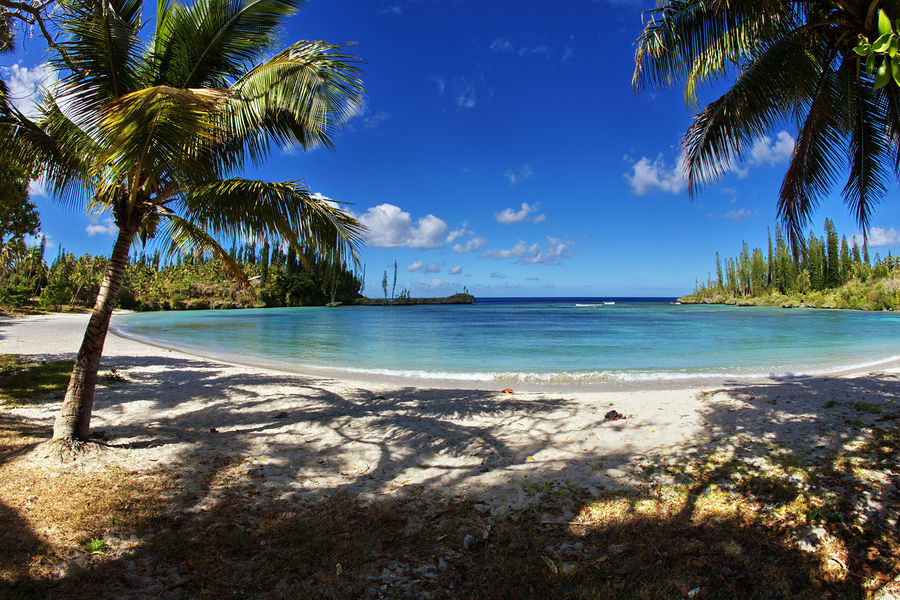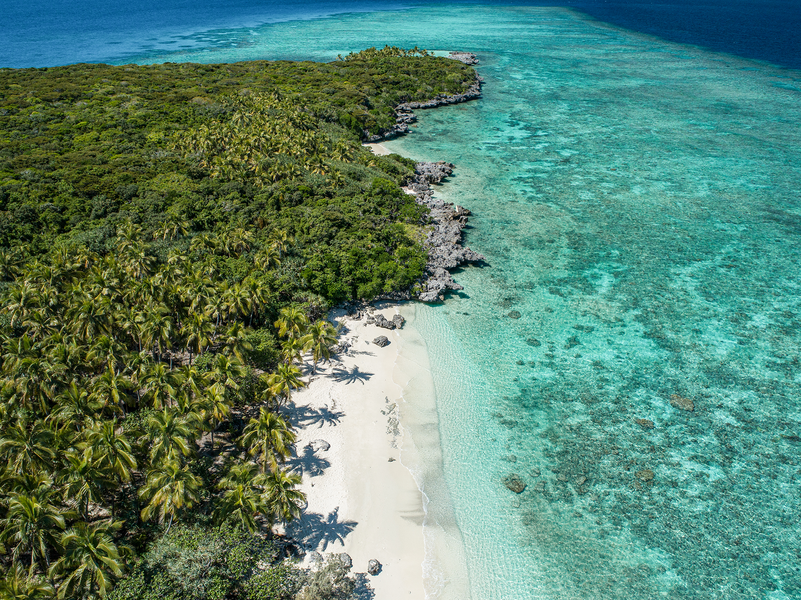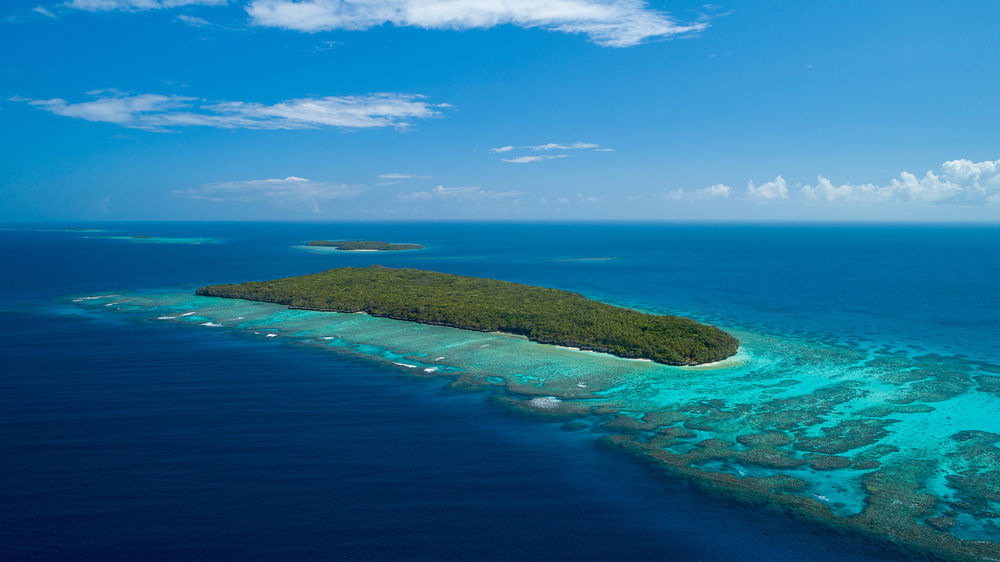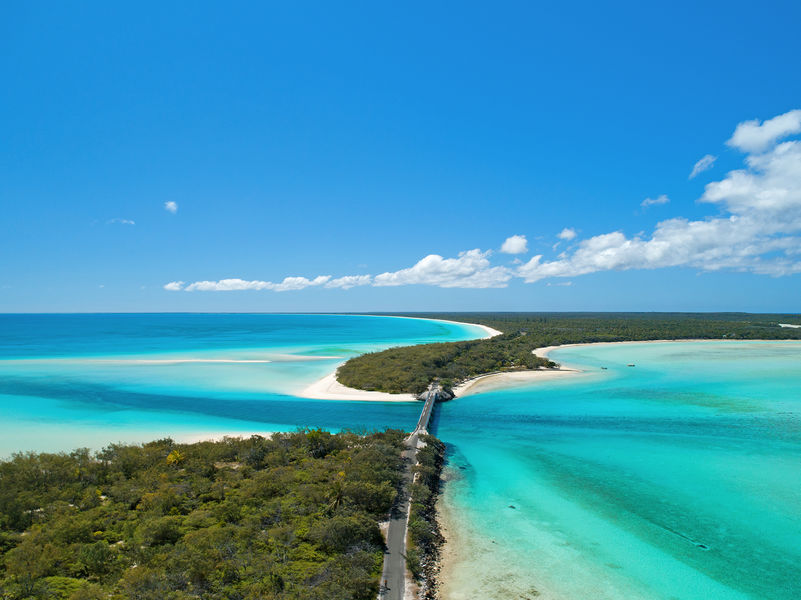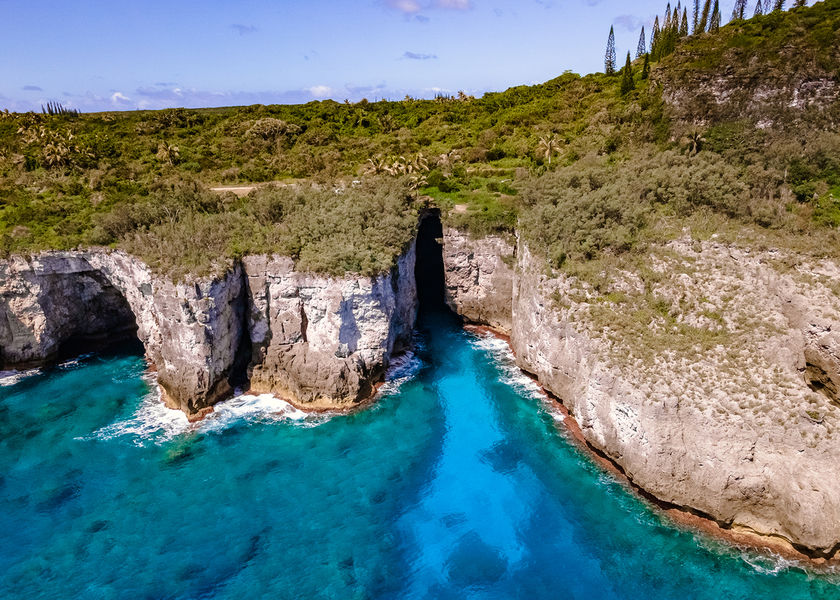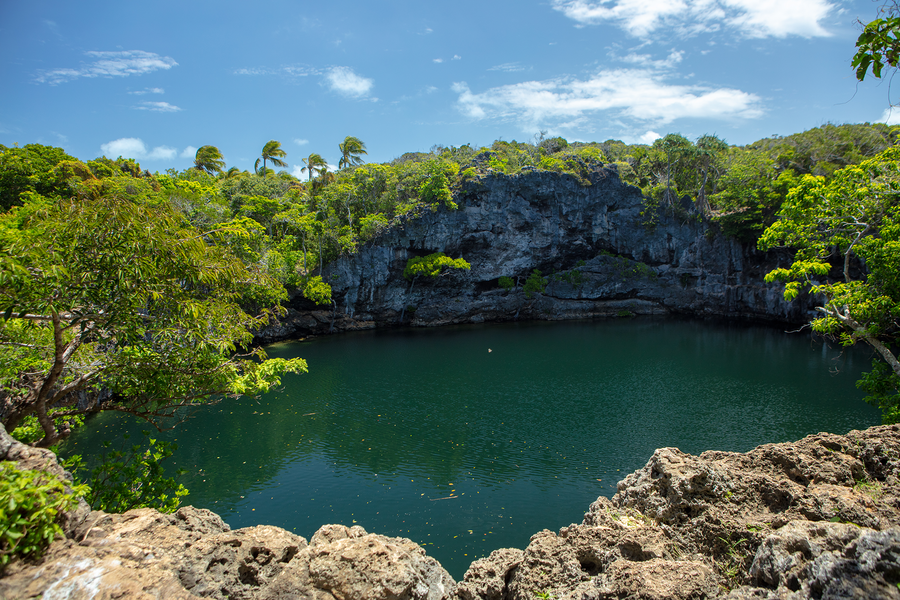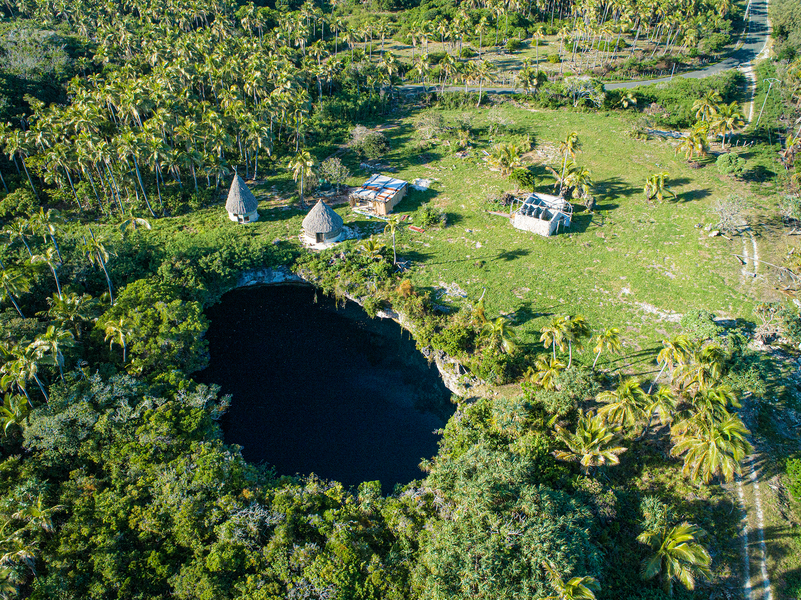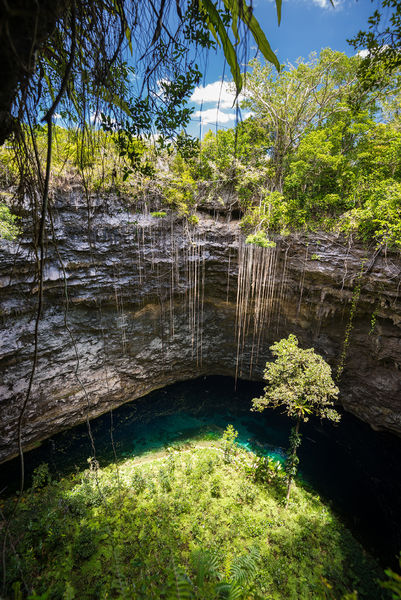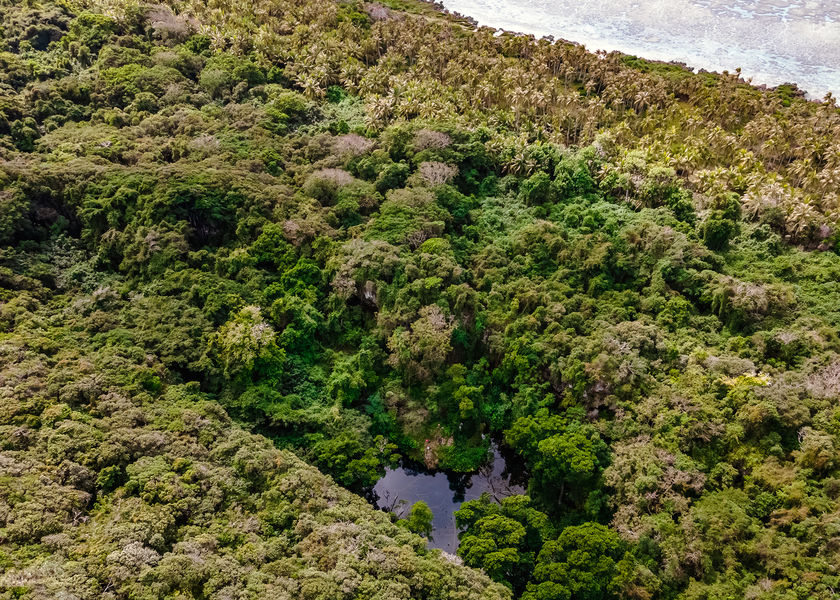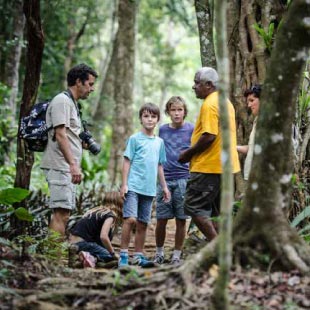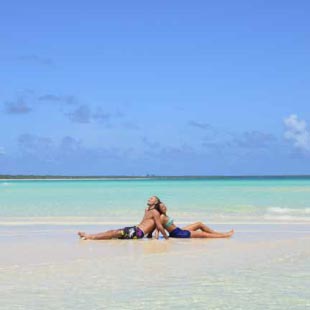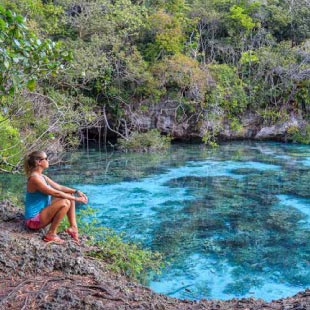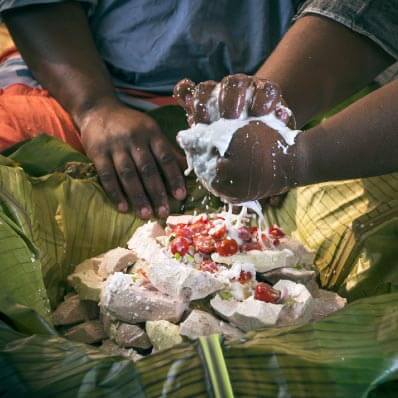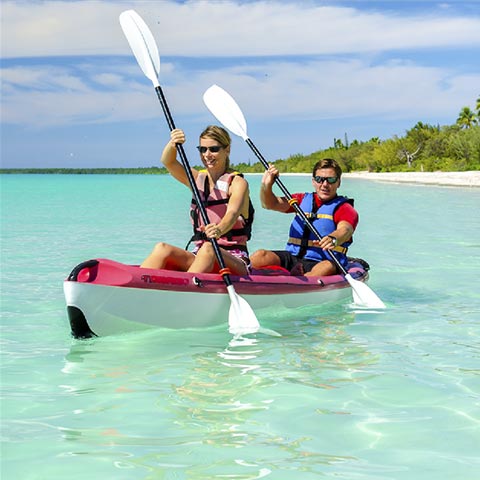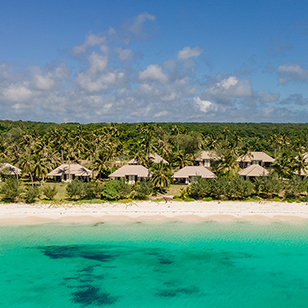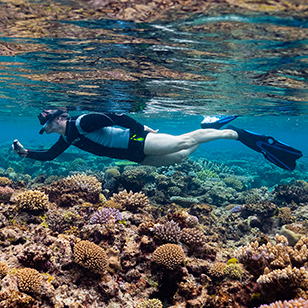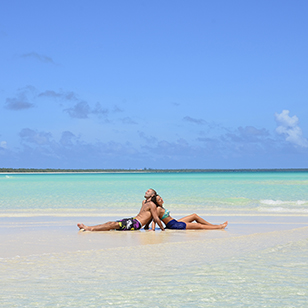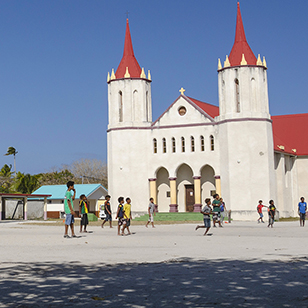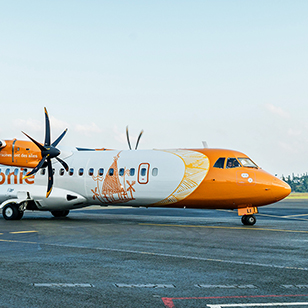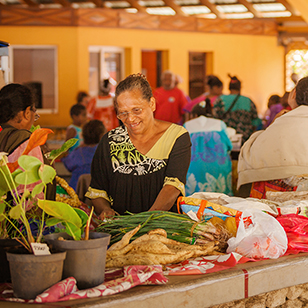This natural basin with its crystal-clear waters, fed by the passage of the sea under the coral, serves as a refuge for turtles and fish.
Located in the southern part of the island in the Mou tribal area, Ahmelewedr Bay, the twin of Wadra Bay is a place of great charm, and one steeped in history.
Chateaubriand Bay is a deep bay that stretches from the Luecila tribal village in the north to the port of Wé in the south and is ideally located in the centre of the island.
Lékiny Bay, a beautiful, well-sheltered body of water with unique colours, is a customary fishing reserve for the people of the Fayawa tribal village, a small island located in the bay.
The small bay of Shabadran, protected by a collection of cliffs and columnar pines is one of the most beautiful sites in New Caledonia, it is accessible via an excursion that is as unforgettable as it is demanding!
Sandalwood Bay stretches for nearly 50 km, from Cap Mandé in the south to Cap Aimé Martin in the north.
Cape Wabao dominates the southwest of the island with its coral terraces bristling with columnar pines, overlooking small rocky coves with transparent waters that are rich in a wide variety of fish, ideal for snorkelling.
Magnificent cliffs overlooking the lagoon and located north of the island in the Jokin tribal village.
The majestic cliffs at Lékiny stretch for nearly 3 kilometres and are about twenty metres high at their highest point.
Just south of Lifou, the cliffs of Xodre are a wild and mineral place, from where you can see Tiga island and even Maré island in good weather.
Nestled in the heart of the forest that covers the south of the island, you can discover Anubet cave.
Hidden in the forest about fifty metres from the main road, Pethoen Cave is home to a variety of magnificent stalactites.
Northeast of Lifou, the Devil's Cave is a mysterious place full of legends.
At Wedrumel you can discover the largest underground cave in Lifou.
Fayawa Islet is located south of Ouvéa Island, between Mouli Island and Lékiny Cliffs.
Emerald green water holes are hidden in the middle of a lush forest.
Near Luengöni Beach, a network of galleries leads to an underground pool with cool and clear refreshing water.
A site by the sea where waves and swells have formed potholes in the coral formations.
A popular mooring and launching site for boaties, Drueulu Beach is made up of several small rocky coves.
At the foot of Cape Wabao, Hpédé Bay is home to numerous small beaches and coves, and seabeds that are both colourful and easily accessible. It is an amazing spot from which to enjoy the sunset over Cape Wabao.
A small beach in the extreme south on the island of Mouli, from where in good weather you can see New Caledonia’s main island, Grande Terre.
A little gem protected by the surrounding cliffs; Kiki beach is one of Lifou's best-kept secrets.
A small quiet bay where turtles and the children of the place frolic, to discover at sunset.
The Atoll of Ouvéa is closed to the west by a string of uninhabited islets and sandbanks that stretch like comet tails clinging to the ends of the main island, these are known as the Northern and Southern Pleiades, and they are separated by the Anemata Pass.
The Atoll of Ouvéa is closed to the west by a string of uninhabited islets and sandbanks that stretch like comet tails clinging to the ends of the main island, the Northern and Southern Pleiades, separated by the Anemata Pass.
The bridge of Mouli spans the inlet that separates the main island of Ouvéa from the island of Mouli, and where a photo break is essential!
7 km from La Roche, legend has it that a warrior, cornered by his enemies, crossed with a single leap this seven-metre-wide ravine in the cliffs overlooking Allier Bay.
Hidden under the cover of trees near the Takedji tribal village this water hole serves as a refuge for a large number of turtles
Wedged between the beach and the road, the Blue Hole of Hanawa is a seawater hole 30 metres in diameter, and of unknown depth.


